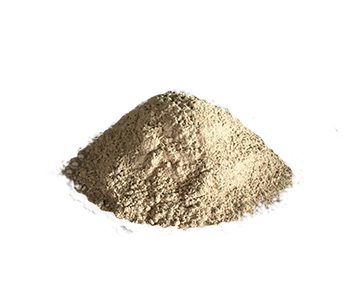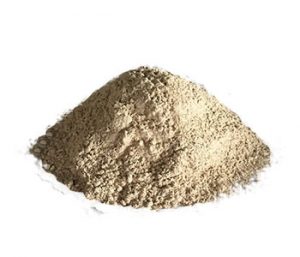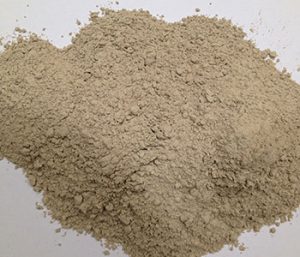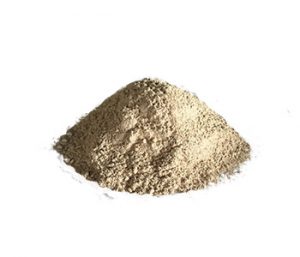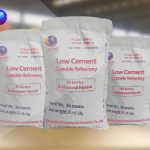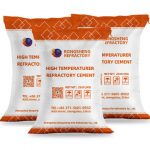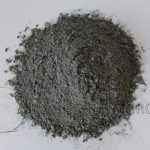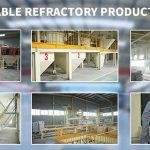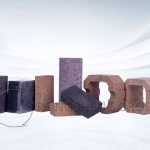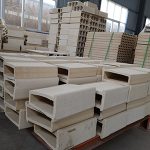General with high quality bauxite and high quality lime as raw materials, according to a certain proportion with the right amount of ingredients, after the sintering of aluminate as the main ingredients of clinker, and then ground into fine powder, made of fire-resistant hydraulic cementite materials, known as refractory cement. Refractory cement shall not be less than 1580 degrees Celsius. According to the composition can be divided into aluminate refractory cement, low calcium aluminate refractory cement, calcium magnesium aluminate cement and dolomite refractory cement.
Introduction to Refractory Cement
This series of refractory material is also called high temperature cement. A cement with a special material used in the preparation of refractory concrete.
Mainly include:
- Low-calcium aluminate fire-resistant cement, consisting mainly of pure bauxite and limestone, including Secar Cement of France;
- High temperature dolomite cement made by taking dolomite as the main raw material and adding apatite and iron ore;
- Use refractory sulfate, borate and phosphate as high temperature resistant cement and so on.
Classification of Refractory Cement
Aluminate Refractory Cement
Aluminate refractory cement is usually a kind of refractory cement made by grinding together 4 parts of low calcium aluminate refractory cement clinker and 1 part of high aluminum cement clinker. Compared with low calcium aluminate refractory cement: high early strength, similar fire resistance, the same use.
Low Calcium Aluminate Refractory Cement
It is a kind of hydraulic cementite material with fire resistance, called low calcium aluminate refractory cement, which is made of raw material with high quality aluminum alum and high quality white ash stone as raw material and suitable composition in a certain proportion, after sintering, the clinker with low calcium aluminate as main composition is ground into fine powder.
A aluminate cement made by sintering and grinding low calcium aluminate refractory cement with high quality alumina and limestone in an appropriate proportion. Its composition is generally: alumina 70%, calcium oxide 19% ~ 23%, silica & LT; 4%, iron oxide & LT; 1.5%.
The mineral composition is dominated by monocalcium dialuminate, accounting for 60% ~ 70%, and the fire resistance is above 1650℃. Compared with high alumina cement, the main differences are: high alumina content, low calcium oxide content, low early strength, high refractoriness. It can be mixed with refractories above 1770℃ (such as calcined bauxite, high alumina brick pieces, etc.) into refractory concrete or mortar, used as the lining of cement rotary kiln and other industrial kilns.
Low aluminate refractory cement uses include
- It can be mixed with refractories above 1770℃, such as calcined bauxite, high aluminum brick pieces, etc., into refractory concrete or mortar, used for some high-temperature kilns as refractory lining and some long-term high temperature projects subjected to atmospheric and rain erosion.
- It can be prepared with light aggregate for heat-insulation and heat-resistant coagulation.
- It can also be prepared with asbestos into asbestos cement products with insulation and heat resistance.
Calcium Magnesium Aluminate Cement
Calcium magnesium aluminate cement is sintered and ground into high-quality alumina and dolomite at appropriate proportions. The composition of calcium magnesium aluminate cement is generally: alumina 66% ~ 74%, calcium oxide 13% ~ 18%, magnesium oxide 10% ~ 13%. Trace amounts of silica and iron oxide. The mineral composition is 45% ~ 60% of calcium aluminate and calcium dialuminate, and 35% ~ 50% of spinel. The fire resistance is above 1650℃.
Compared with low calcium magnesium aluminate cement, calcium magnesium aluminate cement has the following advantages: high resistance to slag and metal melt chemical erosion; In the case of the same alumina content, the refractoriness is higher due to the presence of spinel; The mixing water is less, the porosity of cement is lower after hardening, and the calcining yield is reduced. The strength loss is small when heating to 1100℃ for dehydration. Calcium magnesium aluminate cement and fused white corundum aggregate prepared into concrete, can be used as cement rotary kiln and other industrial kiln lining.
Attention to Baking Of Refractory Cement Lining
- At 350℃at room temperature, local bursting is most likely to occur, and special attention should be paid to slow baking. If there is still a lot of steam coming out after 350℃ heat preservation, the heating rate should still be slowed down.
- Under the condition of poor ventilation and difficult discharge of water and air, the heat preservation time should be appropriately extended.
- When baking with heavy oil, it is necessary to strictly prevent the heavy oil injection on the lining surface, in order to prevent local burst.
- When using firewood to bake, direct contact with the flame often causes excessive local heating, which should be protected.
- The newly poured refractory cement should be baked at least 3 days later.
- The cooling of refractory cement lining should also be slow to avoid forced ventilation.
Technical Requirements For Refractory Cement
- Fineness of refractory cement: The finer the cement particle is, the larger the specific surface area is, the faster and more sufficient the hydration reaction is, and the strength is higher in both early and late stages. State regulation: specific surface area should be more than 300 square meters per kilogram, otherwise it is unqualified.
- Setting time: The initial setting time of cement should not be too short in order to ensure sufficient time to complete various processes such as mixing, transportation and molding during construction; After the completion of construction, it is hoped that the cement can harden as soon as possible and produce strength, so the final setting time should not be too long. The initial setting time of refractory cement shall not be earlier than 45 minutes and the final setting time shall not be later than 390 minutes.
- Volume stability: The uniformity of volume change of cement slurry during setting and hardening is called volume stability of cement. If the volume change is not uniform, that is, the volume stability is not good, it is easy to produce warping and cracking, reduce the engineering quality and even cause accidents.
Refractory Cement Manufacturer
Zhengzhou Rongsheng Refractory is a refractory and thermal insulation material production enterprise, which is a comprehensive enterprise integrating scientific research, testing, development, production, sales and customers. RS Factory possesses one production line of shaped and unshaped fire-resistant and wear-resistant products respectively, one production line of thermal insulation products, which is enough to meet the processing capacity of 80,000 tons of high-quality products per year. If you need to purchase refractory products, please feel free to contact us. We are committed to the production of high quality refractory material, stable and reliable quality, and many customers to achieve friendly relations of cooperation, we will provide you with the best quality solutions and consulting sales services.

